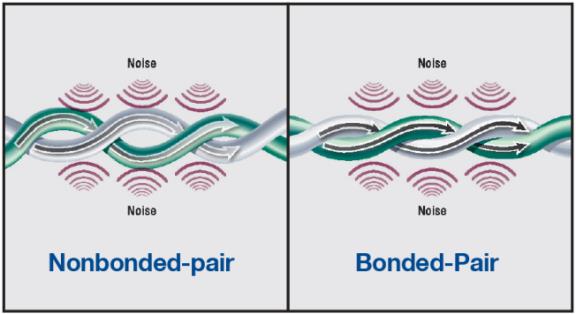Are You Specifying Ethernet Cable That Builds in Network Failure?
IT Ethernet networks were first put to use in the office environment long before the advent of OT Ethernet networks carrying data to and from equipment in the harsher industrial environment of the factory floor. Perhaps that’s one reason why so many organizations, when building their vital latter-day factory OT networks, simply went back automatically to specifying what they knew—the same familiar cable that served them well on their enterprise side—without taking into account the added challenges of the industrial environment.
That’s unfortunate, because there is a long list of threats that don’t tend to rear their heads in the climate controlled, carpeted comfort of the office—things like oil and solvent exposure; crushing forces; cutting forces; water immersion; high temperatures; low temperatures; twisting, bending and pulling in use and more. Any of these threats can and do wreak havoc on the OT data “lifeline” that is Ethernet cabling, causing incomplete or otherwise compromised data to reach vital equipment. That means incorrect production and operating instructions, defective product, costly scrap, unscheduled downtime or even safety or environmental incidents.
Even a single such incident can easily cost an organization tens or hundreds of thousands of dollars, as well as cause potentially incalculable damage to business and reputation. The real tragedy? How easily and inexpensively such incidents can be avoided. The fact is, in a typical 10,000 square foot, million dollar network installation, the jump from cabling that offers little or no protection against the common threats found in an industrial environment to one that offers optimum protection against them, can represent an added investment of less than $1000. That’s right, for only a few hundred dollars, incidents—perhaps multiple incidents—that can set your organization back hundreds of thousands of dollars can be avoided.
Three Main Types of Cable to Choose From
When specifying cable for the industrial environment, there are three main overriding categories available—enterprise cable, conventional industrial cable and bonded-pair industrial cable. The latter is a proprietary Belden innovation which basically imparts high performance physical and electrical performance qualities to the cable by ensuring that each of the twisted pairs of copper wires do not separate in use. When gaps occur, it is common to experience intermittent or even permanent data flow damage. And, in an industrial environment, the perpetrating pulling, bending and twisting stresses can not only be inflicted during the act of installation in tight, inhospitable places, but also through the exposure to constant motion and vibration in ongoing use. Just think about the movement of cables in robots, power equipment, cutting tools, conveyors and other common pieces of industrial machinery. In addition, bonded-pair cable provides added protection against high frequency electrical noise, protection that can even take the place of costly shielding in many cases. Neither of these protections is available from conventional industrial cable.

This at-a-glance chart shows you the basic vital differences among these three options:
|
Offers Significant Protection Against |
Commercial Grade Cable |
Conventional Grade Cable |
Bonded Pair Grade Cable |
| 耐磨 | NO | YES | YES |
| Cold Exposure | NO | YES | YES |
| High Temperature Exposure | NO | YES | YES |
| 挤压 | NO | YES | YES |
| 切割 | NO | YES | YES |
| 接触机油 | NO | YES | YES |
| 接触紫外线 | NO | YES | YES |
| 浸水 | NO | YES | YES |
| 电气噪音 | NO | NO | YES |
| Pulling/Twisting/Bending During Installation and Use | NO | NO | YES |
Belden Sells All Three
At Belden, we sell all of the Ethernet cables above and more—conventional enterprise cable, conventional industrial cable and bonded-pair industrial cable. The important thing is to match the right cable to the right environment for optimum results.
Learn how an aluminum can manufacturer upgraded their automation infrastructure using Cat 5e bonded-pair Ethernet cable for increased productivity and efficiency in this free case study, “Packaging Manufacturer Modernizes Plant to Increase Efficiency (Crown Holdings).”
